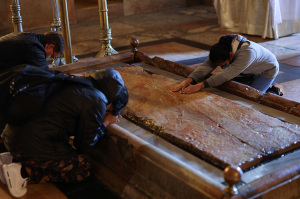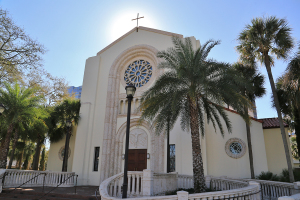'Gospel' of Judas Free of Forgeries But Still 'Fake, Heretical,' Says New Testament Scholar
Researchers have recently revealed their methods for determining that the Gospel of Judas, a fragmented Coptic text traced to Egypt in approximately A.D. 280, is in fact free of forgeries.
Daniel B. Wallace, professor of New Testament Studies at Dallas Theological Seminary, contends that although the text may in fact be free of forgeries, it carries no historic credibility, and proves to be a fake gospel that paints a heretic view of Jesus.
The text, which was discovered in Egypt in the 1970s, was analyzed in a 2006 National Geographic Society investigation by a team of researchers led by microscopist Joseph Barabe of McCrone Associates in Illinois to determine if the ancient Egyptian text raised any red flags regarding forgeries.
The text describes Judas Iscariot, one of the biblical 12 apostles who betrayed Jesus to Sanhedrin priests, as being an ally of Jesus, turning the son of God over to the authorities at his request so that his spirit may be released from his physical body.
The researchers reportedly used radiocarbon dating and script analysis, among other techniques, to determine that the text was free of forgeries.
As Joseph Barabe told LiveScience in a recent article, his team of researchers compared the Gospel of Judas with marriage certificates and land documents dating from the third century A.D., found at the famous Louvre museum in Paris, France, to determine the validity of the Gospel of Judas.
Researchers found that the Gospel of Judas contained a unique ink mixture of the text, which consisted of colors black and brown, and they ultimately discovered that this ink combination coincides with a transition of ink use during the third century A.D. in Egypt.
Barabe was quick to tell LiveScience that his team's analysis of the text did not prove its authenticity, but rather found that there were no forgeries.
Wallace, a New Testament scholar, told The Christian Post via email that it is important to distinguish the difference between "true" and "authentic" when discussing an early sub-Christian writing such as the Gospel of Judas.
"[W]hen we hear the word 'authentic' regarding an early sub-Christian writing it is natural to conclude that authentic [equals] true as regards the historicity of the Christian faith," Wallace, who is also the founder and executive director of the Center for the Study of New Testament Manuscripts, told CP.
"This is not the case in this instance. All that is being claimed is that the manuscript really was produced in the late third century," Wallace added.
Wallace also told CP that the specific date of "approximately A.D. 280" provided by Barabe proves to be more precise than radiocarbon dating and ink analysis would typically yield.
"The recent revelations by Joseph Barabe indicate a date of 'approximately A.D. 280,' but this seems to be more precise than the technology would suggest," Wallace told CP.
"Most likely, the confluence of ink analysis and radiocarbon dating have both legitimately authenticated this codex and fixed the date to the late third to early fourth century."
The biblical scholar added that the storyline of the Gospel of Judas, including the line that Judas wanted to free Jesus' spirit from its physical confines, proves fitting for vintage Gnosticism, or the belief that the material world should be discarded for the spiritual world.
"This is vintage Gnosticism, which made a hard distinction between the spiritual and material world, branding the one good and the other bad," Wallace wrote.
"But does this mean that there is any historical truth to the Gospel of Judas, that it actually tells us the real story about the relation of Jesus to Judas? Hardly. Not a single scholar thinks that this conversation has any historical credibility."
Wallace then referenced Irenaeus, a Bishop in Lyons, France, who in about A.D. 180 condemned the Gospel of Judas as a forgery and heresy because it went against mainline Christianity.
"Irenaeus was right: this is a fake gospel which promotes a heretical idea about Jesus of Nazareth. The discovery and authentication of the Judas codex does nothing to disturb that assessment," Wallace confirmed.
The Gospel of Judas now resides in the Coptic Museum in Cairo, Egypt.




























